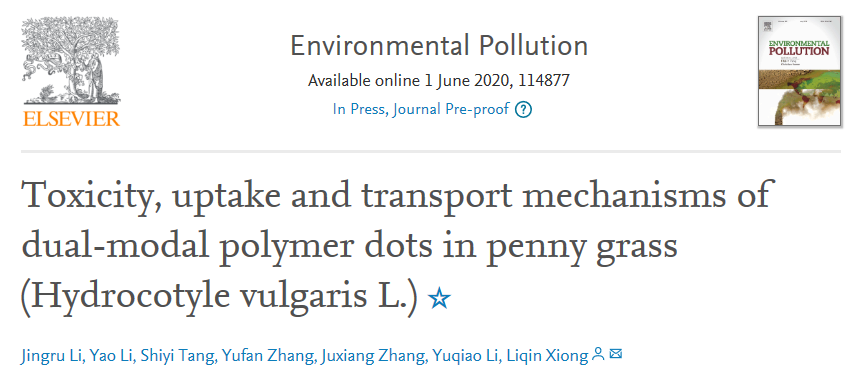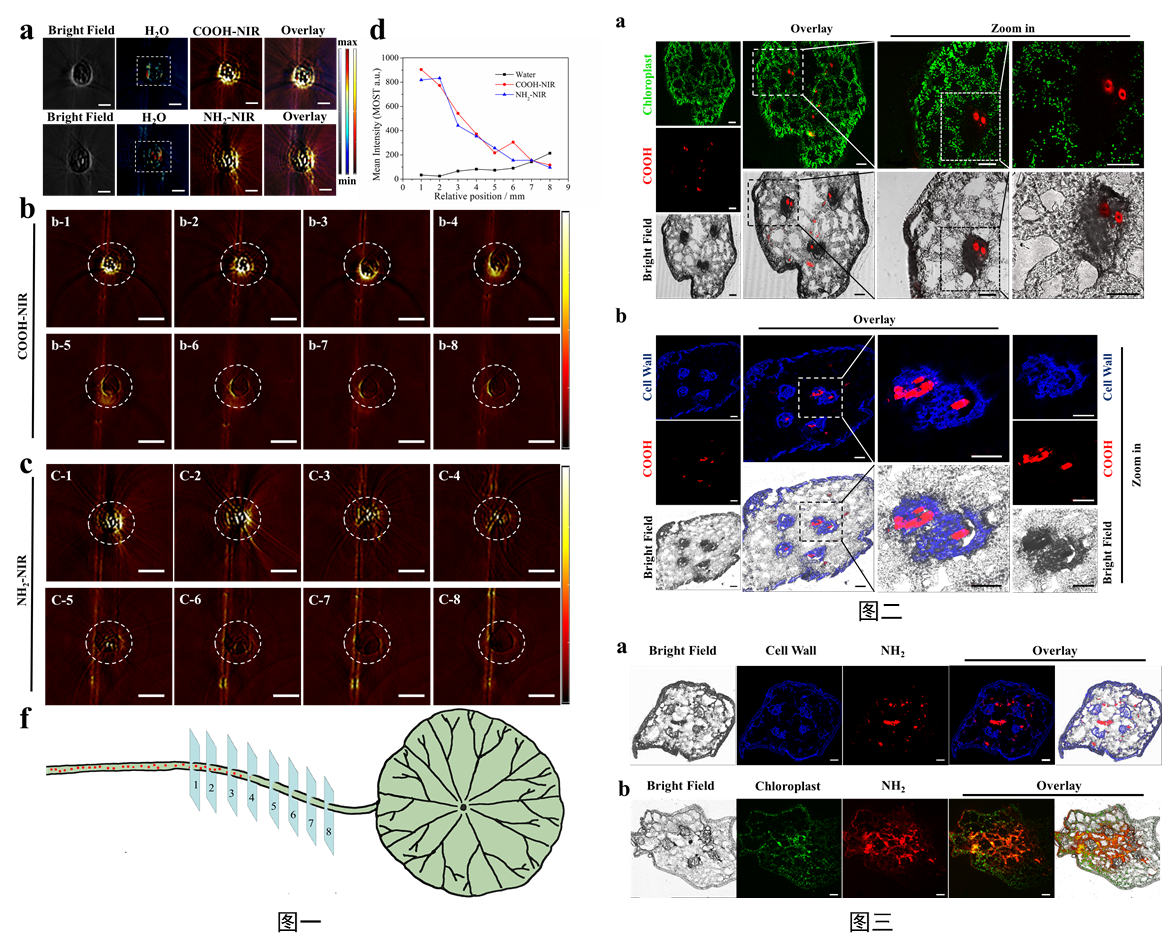


Liqin Xiong’s team from Shanghai Jiaotong University: Propose a New Application of Conjugated Polymer Dots in Plants
June 08, 2020
Associate Professor Liqin Xiong’s team from the School of Biomedical Engineering published the latest research findings online "Toxicity, take and transport mechanisms of dual modal polymer dots in penny grass (HYDROCOTYLE vulgaris L.)" in Environmental Pollution, a SCI Q1 journal of environmental science on June 1st, 2020.

Currently, the production of polymers such as plastic has had an increasing trend; at the same time, the release of polymers into the environment, especially the water environment, has increased dramatically, reaching 4.4e12.7 million tons/year. The lifetime of synthetic polymers is almost extremely long, and they can be broken into smaller debris by ultraviolet (UV) radiation from sunlight, mechanical abrasion or environmental erosion. This fragmentation originates the so-called microplastics (MPs) and nanoplastics (NPs). Therefore, it is more necessary to understand the impact of these micro- or nanoscale polymers on aquatic plants. In this study, conjugated dual modal polymer dots were used to simulate the decomposition of plastics in water. PA imaging and fluorescence imaging were used to determine uptake and transport of Pdots in the stem, which provided a theoretical basis for subsequent prevention work.

Figure 1. Schematic diagram of (a) COOH-Pdots and (b) NH 2 -Pdots. Uptake and transport mechanisms of Pdots in the (c) blade and (d) stem.
The designed conjugated Pdots in this study have the advantages of simple synthesis process, stable fluorescence performance and adjustable outer ligands. They can simulate the plastic decomposing compounds with different physical and chemical properties in water environment. The plant was cultured in water environment with conjugated Pdots, and the changes of plant physiological and biochemical parameters were detected at different time. It was found that the parameters changed significantly and toxicity occurred at day 10. Then, nanomaterials distribution with different properties in stems and leaves was observed by confocal fluorescence microscopy. After 48 hours of living fluorescence imaging, it was found that the amino modified Pdots took on the dynamic process of upward and downward in the longitudinal transportation of stems, but the carboxyl modified nanoprobe did not. It was worth noting that PA imaging has been reported for the first time in plants. The transport information of exogenous substances in plants was obtained by non-invasive PA fault scanning, which provides new imaging methods and technologies for the related research in plants.

Fig. 2. Confocal laser scanning microscopy (CLSM) images
The paper’s first author is Jingru Li, with Associate Professor Liqin Xiong as corresponding author. The project is supported by National Key R&D Program (2016yfc1303100), National Natural Science Foundation of China (81974273; 81671737; 81301261; 21374059).
Full text link:
https://doi.org/10.1016/j.envpol.2020.114877

Liqin Xiong is associate professor and doctoral supervisor of Shanghai Jiaotong University. She has contributed herself in fluorescent conjugated polymer nanoprobes for a long time. Research fields: tumor molecular imaging, lymphatic system functional imaging, brown fat imaging, etc.